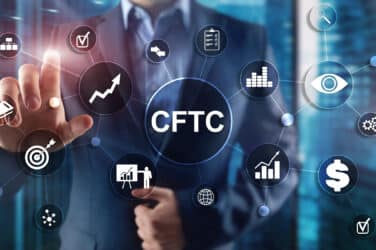
The Securities and Exchange Commission has issued a “roadmap” describing its plan to phase in final rules regulating security-based swaps and security-based swap market participants, as it and the Commodity Futures Trading Commission seek to implement the derivatives provisions of the Dodd-Frank Act, which took effect nearly a year ago.
The perception within the industry is that the CFTC is taking a far more aggressive approach to rulemaking than the SEC.
“The SEC’s roadmap reflects a methodical, principles-based approach to rulemaking, versus the rules-based approach adopted by the CFTC,” said Christopher Giancarlo, executive vice-president of corporate development at inter-dealer broker GFI Group.
Although the CFTC has the lion’s share of regulatory oversight under Dodd-Frank, the SEC has responsibility for security-based swaps, which are defined as swaps based on a single security or a narrow-based group or index of securities, or events relating to a single issuer or issuers of securities in a narrow-based security index.
While the final CFTC rules on swap execution facilities are expected in three to six months, the SEC “is on a slower track”, said Giancarlo, with final rules perhaps a year away.
The SEC’s policy statement does not estimate when the rules will be put in place, but describes the sequence in which they would take effect.
The phased-in approach is intended to avoid the disruption that could occur if all the new rules took effect simultaneously. To date, the SEC has proposed nearly all the rules required under the Act and has already begun to adopt those rules.
Among the major items remaining on the regulators’ docket related to OTC derivatives are definitions of swaps, determinations of clearing requirements and issues of territoriality.
In April, the CFTC and SEC published final rules—the “definitional rules”—defining the terms “swap dealer”, “security-based swap dealer”, “major swap participant” and “major security-based swap participant”.
Those rules, along with the cross-border rules, provide the foundation for all the other rules, the SEC noted in its policy statement.
The SEC’s proposed sequencing groups rulemaking into five categories: definitional and cross-border rules; reporting of swaps transactions to swap data repositories; swaps clearing; registration of swap dealers and major swap participants; and regulation of swap execution facilities (SEFs).
Dodd-Frank in the U.S. and European Market Infrastructure Regulation in Europe will have the greatest impacts on derivatives users as central clearing becomes mandated for specific derivatives transactions.
Within both pieces of regulation, certain derivatives will be deemed “clearable” and, if clearable, will need to be executed on a SEF in the U.S. and an organized trading facility, or OTF, in Europe and cleared through a clearing member of a central counterparty (CCP).
In addition to the challenges of selecting and integrating with the appropriate SEF, clearing broker and CCP for each trade, derivatives users will be faced with maintaining all of their derivatives in a mixed clearing environment, where some transactions are centrally cleared and others remain bilateral.
“This new mixed model will greatly increase operational complexity and introduce significant new data requirements,” said Ted Leveroni, executive director of derivatives strategy and external relations at post-trade provider Omgeo.




